
Winnipeg: The Heart of Canada's Prairie Provinces
Discover Winnipeg: A vibrant city where history, culture, and nature converge in the heart of Canada’s prairie provinces.
Winnipeg, the capital of Manitoba, is a vibrant city that offers a unique blend of history, culture, and natural beauty. Known for its friendly residents and diverse communities, Winnipeg is a destination that warmly welcomes visitors from around the world. The city is situated at the confluence of the Red and Assiniboine rivers, a location that has been a meeting place for thousands of years, from Indigenous peoples to European fur traders. The Forks, one of the city's most popular attractions, is a historic site located at this confluence. It features a bustling market, cultural events, and beautiful riverfront views. Nearby, the Canadian Museum for Human Rights stands as a striking architectural landmark and offers thought-provoking exhibits that explore human rights issues globally and locally. Winnipeg's vibrant arts scene is showcased in its many theaters, galleries, and music venues. The Royal Winnipeg Ballet, one of the oldest ballet companies in North America, is based here and offers world-class performances. For nature enthusiasts, Assiniboine Park and Zoo provide a green oasis in the city, perfect for picnics, walks, and wildlife viewing. Winter in Winnipeg is a special time, with the city embracing the cold with events like the Festival du Voyageur, which celebrates French-Canadian culture with music, food, and snow sculptures. The city's extensive network of outdoor skating trails and winter activities make it a true winter wonderland. Winnipeg's culinary scene is also worth exploring, with diverse options ranging from traditional Canadian dishes to international cuisines. Local markets and restaurants offer a taste of the city's rich multicultural heritage. Whether you're interested in history, culture, nature, or food, Winnipeg has something to offer every traveler.
Local tips in Winnipeg
- Visit The Forks early in the morning to enjoy a peaceful stroll and avoid the crowds.
- Check out the Exchange District for its stunning architecture and vibrant arts scene.
- Dress in layers during winter months; temperatures can drop significantly.
- Explore Assiniboine Park Zoo, especially the Journey to Churchill exhibit to see polar bears in action.
- Take a guided tour of the Canadian Museum for Human Rights to fully appreciate its exhibits.
- Try local delicacies like bannock and pickerel at one of Winnipeg’s many local eateries.
Neighbourhoods in Winnipeg
Winnipeg: The Heart of Canada's Prairie Provinces
Winnipeg, the capital of Manitoba, is a vibrant city that offers a unique blend of history, culture, and natural beauty. Known for its friendly residents and diverse communities, Winnipeg is a destination that warmly welcomes visitors from around the world. The city is situated at the confluence of the Red and Assiniboine rivers, a location that has been a meeting place for thousands of years, from Indigenous peoples to European fur traders. The Forks, one of the city's most popular attractions, is a historic site located at this confluence. It features a bustling market, cultural events, and beautiful riverfront views. Nearby, the Canadian Museum for Human Rights stands as a striking architectural landmark and offers thought-provoking exhibits that explore human rights issues globally and locally. Winnipeg's vibrant arts scene is showcased in its many theaters, galleries, and music venues. The Royal Winnipeg Ballet, one of the oldest ballet companies in North America, is based here and offers world-class performances. For nature enthusiasts, Assiniboine Park and Zoo provide a green oasis in the city, perfect for picnics, walks, and wildlife viewing. Winter in Winnipeg is a special time, with the city embracing the cold with events like the Festival du Voyageur, which celebrates French-Canadian culture with music, food, and snow sculptures. The city's extensive network of outdoor skating trails and winter activities make it a true winter wonderland. Winnipeg's culinary scene is also worth exploring, with diverse options ranging from traditional Canadian dishes to international cuisines. Local markets and restaurants offer a taste of the city's rich multicultural heritage. Whether you're interested in history, culture, nature, or food, Winnipeg has something to offer every traveler.
When is the best time to go to Winnipeg?
Iconic landmarks you can’t miss
The Forks Market
Discover the vibrant heart of Winnipeg at The Forks Market, where local flavors, unique crafts, and cultural events create an unforgettable experience.
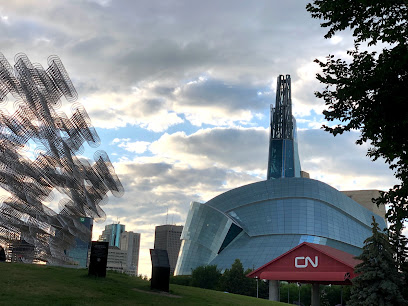
Assiniboine Park
Explore Assiniboine Park, Winnipeg's urban oasis, where lush gardens, an art gallery, a zoo, and dining await you in a stunning natural setting.
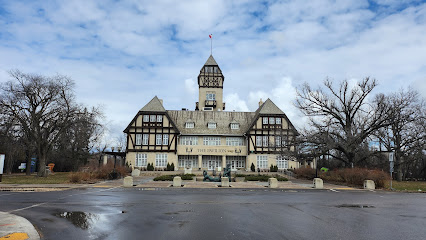
Canadian Museum for Human Rights
Discover the Canadian Museum for Human Rights: An architectural marvel that inspires dialogue on human dignity, justice, and equality in Winnipeg.
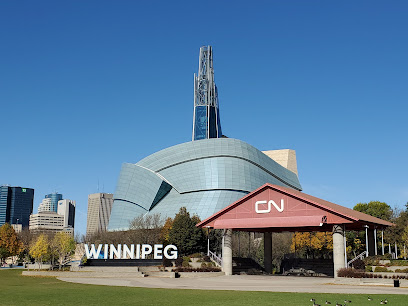
Kildonan Park
Explore Kildonan Park, Winnipeg's breathtaking natural retreat, complete with serene landscapes, recreational activities, and family-friendly fun.
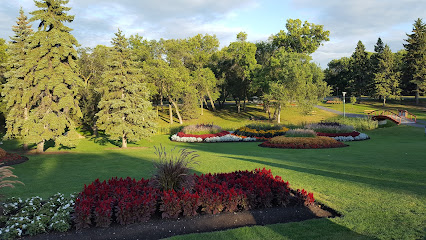
Manitoba Museum
Discover the rich history and culture of Manitoba at the Manitoba Museum, a top tourist attraction in Winnipeg featuring engaging exhibits and interactive experiences.
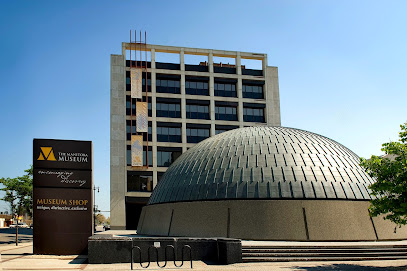
The Fort Garry Hotel, Spa and Conference Centre
Experience the elegance and history of The Fort Garry Hotel, a luxurious retreat in the heart of Winnipeg, perfect for any traveler seeking comfort and culture.
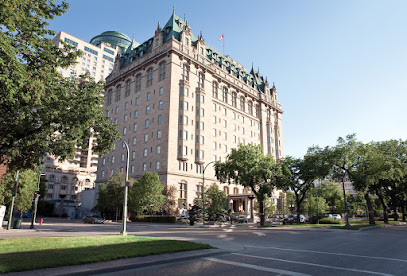
Leo Mol Sculpture Garden
Explore the Leo Mol Sculpture Garden in Winnipeg - a serene park blending captivating sculptures with beautiful botanical landscapes.

Royal Canadian Mint
Explore the Royal Canadian Mint in Winnipeg, where the artistry of coin-making meets Canadian history in a captivating museum experience.
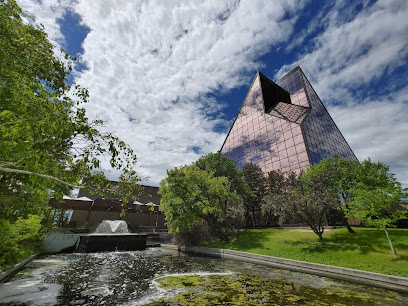
The Leaf
Discover The Leaf, Winnipeg's premier botanical garden, where nature's beauty unfolds through diverse plant displays and artistic landscapes.

Killer Noob Escapes
Experience the thrill of adventure at Killer Noob Escapes, Winnipeg's top escape room center offering unforgettable challenges for all ages.
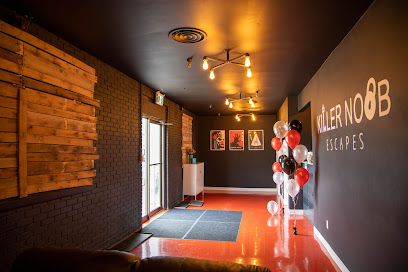
Royal Aviation Museum of Western Canada
Uncover the fascinating history of aviation at the Royal Aviation Museum of Western Canada, featuring rare aircraft and engaging exhibits for all ages.

Fort Gibraltar
Explore the rich history of Fort Gibraltar, a unique venue in Winnipeg offering a glimpse into the 19th-century fur trade era.

Bois-des-Esprits
Explore Bois-des-Esprits, Winnipeg's serene park, perfect for nature lovers and those seeking a peaceful escape amidst stunning landscapes.
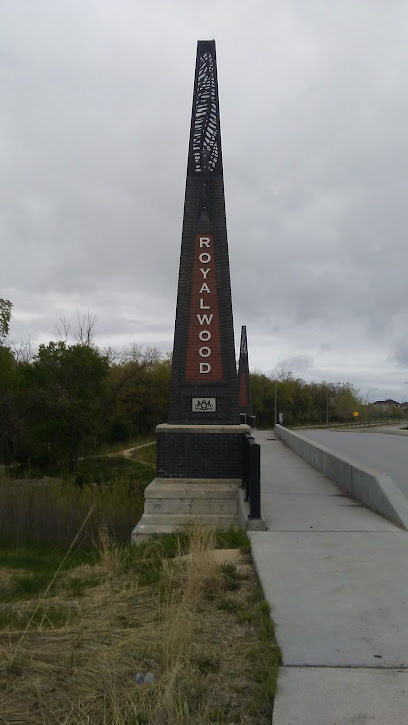
Saint Boniface Cathedral
Explore the stunning Saint Boniface Cathedral in Winnipeg, a masterpiece of Gothic Revival architecture and a key cultural landmark in Manitoba.
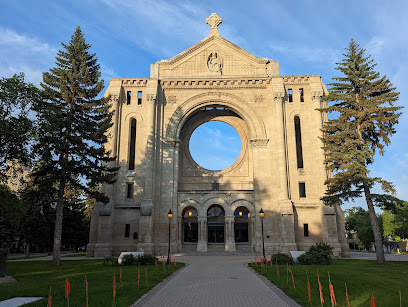
Trappist Monastery Provincial Heritage Park
Discover the serene beauty and rich history of Trappist Monastery Provincial Heritage Park, a tranquil escape in Winnipeg, Manitoba, perfect for nature lovers and history buffs alike.
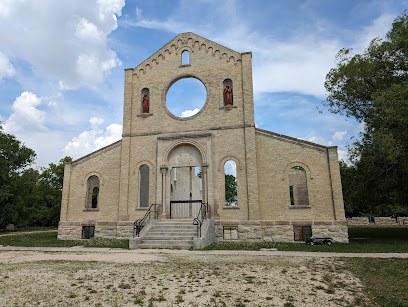
Unmissable attractions to see
Assiniboine Park Zoo
Explore Assiniboine Park Zoo in Winnipeg, a vibrant wildlife sanctuary featuring diverse species and stunning landscapes, perfect for family adventures.
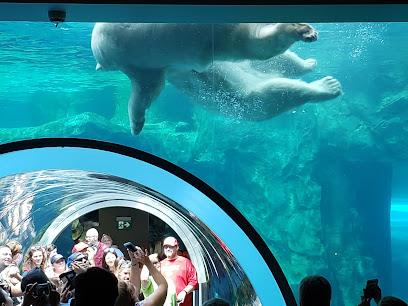
Canada Life Centre
Discover the excitement of Canada Life Centre in Winnipeg, a premier venue for sports, concerts, and unforgettable live entertainment experiences.
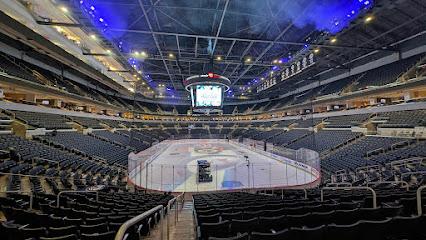
Assiniboine Park
Explore the natural beauty and cultural treasures of Assiniboine Park, Winnipeg's premier destination for relaxation and adventure.
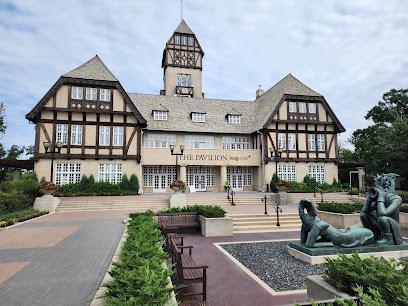
Canadian Museum for Human Rights
Discover the Canadian Museum for Human Rights in Winnipeg, a unique destination dedicated to the exploration and celebration of human rights around the world.
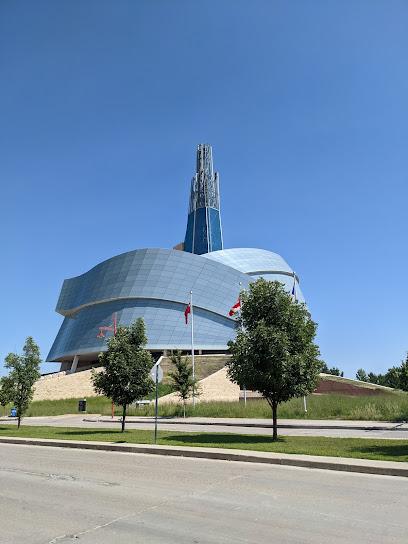
Kildonan Park
Explore Kildonan Park, Winnipeg's scenic urban oasis with trails, gardens, and cultural events for a perfect family-friendly outing.
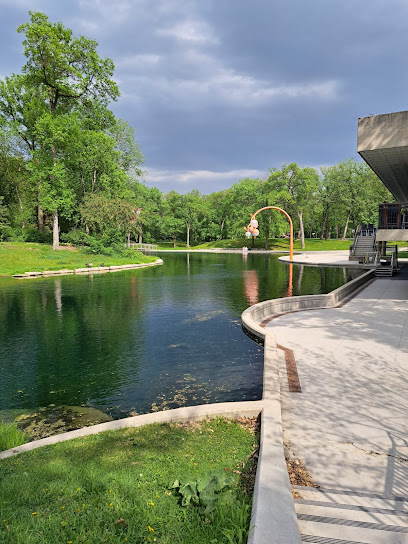
St. Vital Park
Explore the scenic beauty and recreational charm of St. Vital Park in Winnipeg, a perfect escape for nature lovers and outdoor enthusiasts alike.
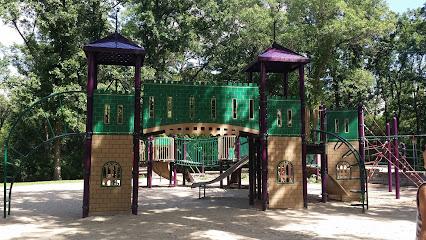
Manitoba Museum
Discover the rich natural and cultural heritage of Manitoba at the Manitoba Museum, a must-visit destination for tourists in Winnipeg.
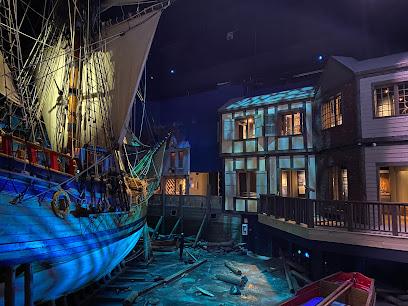
Princess Auto Stadium
Discover the excitement at Princess Auto Stadium in Winnipeg, home of the Winnipeg Blue Bombers, where sports and entertainment thrive.
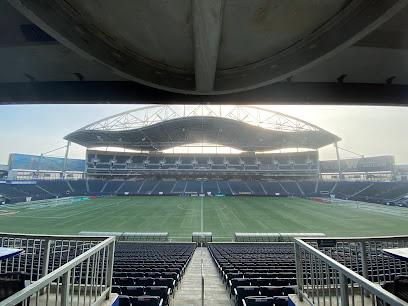
Leo Mol Sculpture Garden
Explore the Leo Mol Sculpture Garden in Winnipeg, where stunning sculptures and vibrant landscapes create a perfect retreat for art and nature lovers.
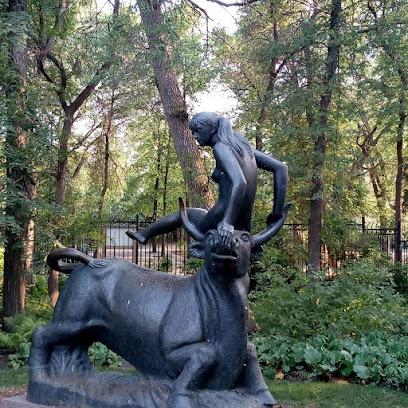
Centennial Concert Hall
Experience the vibrant culture of Winnipeg at the Centennial Concert Hall, the city's premier venue for performing arts and live entertainment.
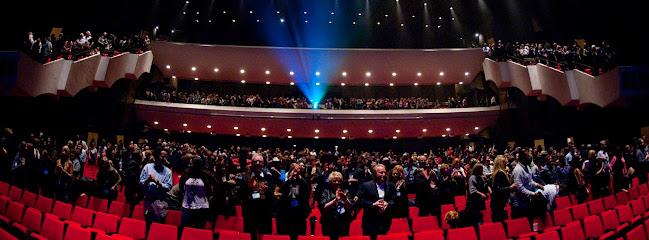
Royal Canadian Mint
Visit the Royal Canadian Mint in Winnipeg for an unforgettable journey into the artistry of coin production and Canadian heritage.
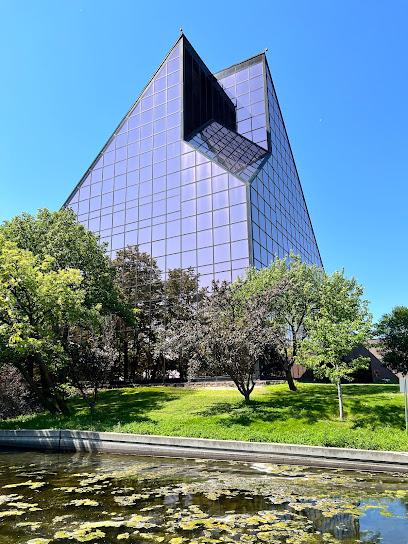
Blue Cross Park
Discover Blue Cross Park in Winnipeg, a vibrant baseball stadium offering thrilling games and community events in a picturesque downtown setting.
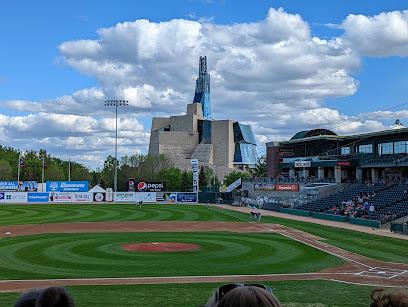
Winnipeg Art Gallery
Discover the Winnipeg Art Gallery: a treasure trove of Canadian and Indigenous art in a stunning architectural setting.
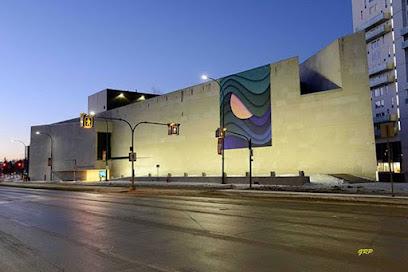
Burton Cummings Theatre
Discover the vibrant culture of Winnipeg at the Burton Cummings Theatre, a historic venue for unforgettable performances and events.
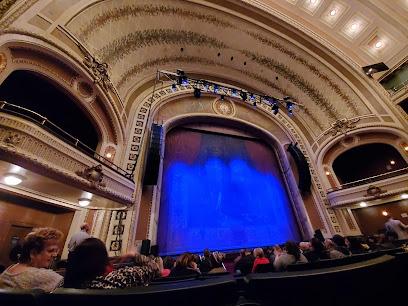
Tinkertown Amusements
Experience the magic of Tinkertown Amusements – a family-friendly amusement park in Springfield, Manitoba, offering thrilling rides and countless fun activities.
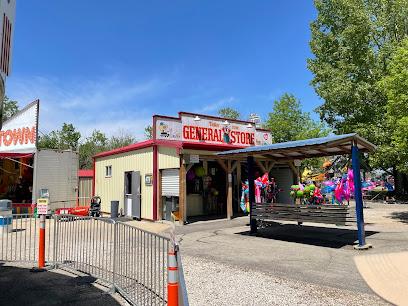
Essential places to dine
The Old Spaghetti Factory (Winnipeg)
Experience authentic Italian cuisine at The Old Spaghetti Factory in Winnipeg - where delicious flavors meet warm hospitality.
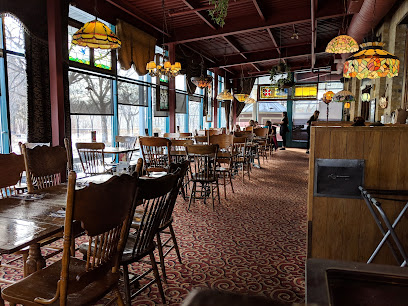
The Keg Steakhouse + Bar - Garry Street
Discover fine dining at The Keg Steakhouse + Bar on Garry Street: where quality steaks meet exceptional service in the heart of Winnipeg.

Chop Steakhouse & Bar
Discover Winnipeg's premier steakhouse offering exquisite cuts of beef and fine dining experiences in an elegant setting.
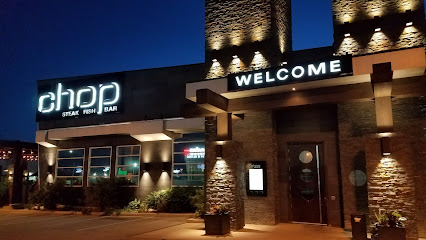
Marion Street Eatery
Discover the heart of Winnipeg's culinary scene at Marion Street Eatery—where local flavors meet delightful dining experiences.
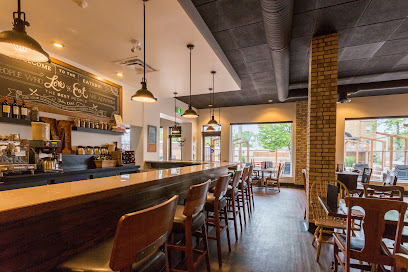
529 Wellington Steakhouse
Experience the pinnacle of fine dining at 529 Wellington Steakhouse in Winnipeg—where exceptional cuisine meets elegant ambiance.

La Roca
Experience authentic Mexican cuisine and lively entertainment at La Roca in downtown Winnipeg - a perfect blend of culture and flavor.
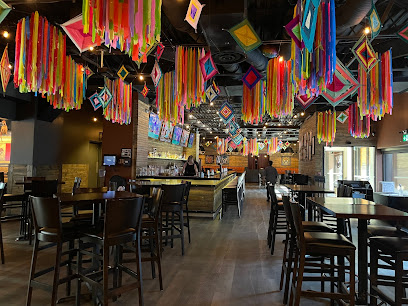
Cibo Waterfront Cafe
Discover Winnipeg's culinary treasure at Cibo Waterfront Cafe – where exquisite flavors meet stunning waterfront views.
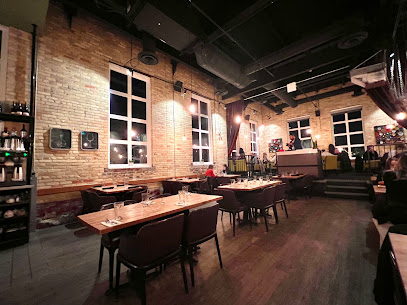
The Grove Pub & Restaurant
Experience the vibrant culinary scene at The Grove Pub & Restaurant in Crescentwood, Winnipeg—where delicious food meets lively atmosphere.
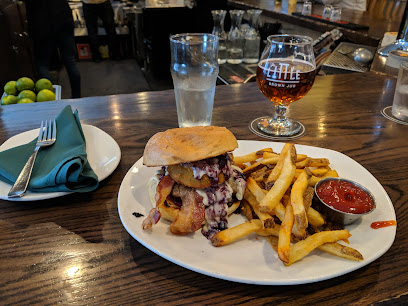
Peasant Cookery
Experience the essence of Manitoba's cuisine at Peasant Cookery in Winnipeg - where local flavors meet rustic charm.
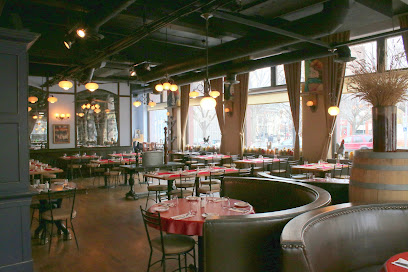
Harth Mozza & Wine Bar
Experience the best of Italian cuisine and fine wines at Harth Mozza & Wine Bar in Winnipeg – a true culinary delight.
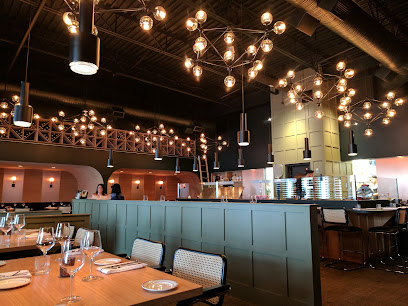
Elephant & Castle
Discover delightful British-Canadian cuisine at Elephant & Castle in Winnipeg's bustling downtown area.
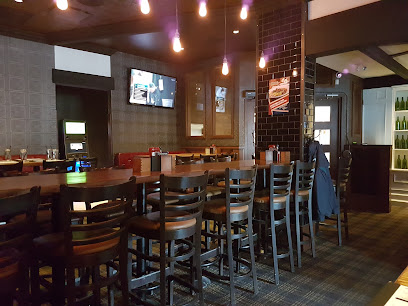
Maxime's Restaurant and Lounge
Experience authentic Mediterranean cuisine at Maxime's Restaurant and Lounge in Winnipeg – where flavor meets elegance in every dish.

Inferno's Bistro
Experience the essence of French cuisine at Inferno's Bistro in Winnipeg - where tradition meets modern culinary artistry.

Bellissimo
Experience authentic Italian cuisine at Bellissimo in Winnipeg—where every dish tells a story and every meal is a celebration.
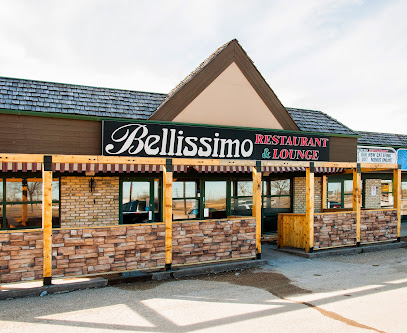
Hermanos Restaurant & Wine Bar
Discover the vibrant tastes of South America at Hermanos Restaurant & Wine Bar in Winnipeg's downtown - a culinary delight awaits.
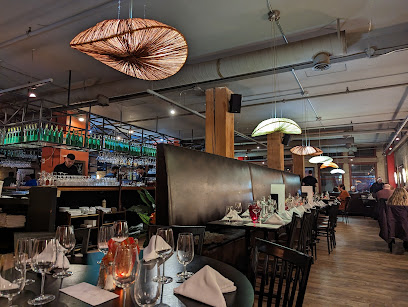
Markets, malls and hidden boutiques
Grant Park Shopping Centre
Explore the diverse stores and delightful dining options at Grant Park Shopping Centre in Winnipeg, your ultimate shopping destination.
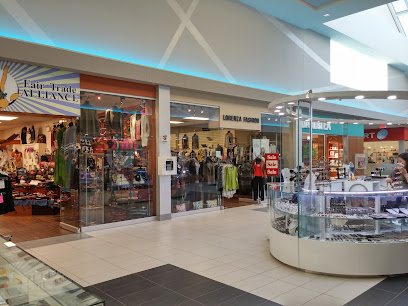
Johnston Terminal
Explore the dynamic Johnston Terminal in Winnipeg, a shopping and culinary hub offering unique stores and local flavors in a historic setting.

Elemental Witchery & Conjure Boutique Inc.
Explore the enchanting world of metaphysics at Elemental Witchery & Conjure Boutique Inc., where unique gifts and spiritual supplies await.
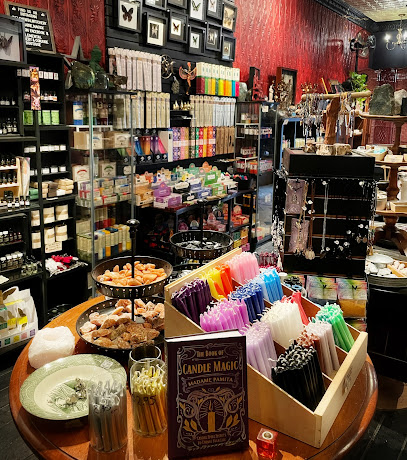
The Old House Revival Company
Explore a treasure trove of antiques and vintage collectibles at The Old House Revival Company in Winnipeg, where history meets unique charm.
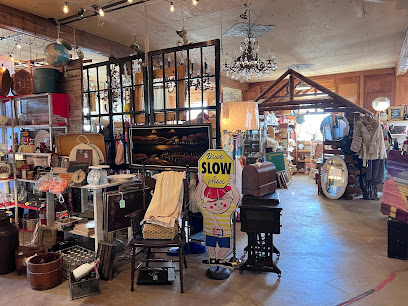
Little Star Gifts
Explore Little Star Gifts in Winnipeg for unique souvenirs, local crafts, and hobby supplies that embody the spirit of Manitoba.
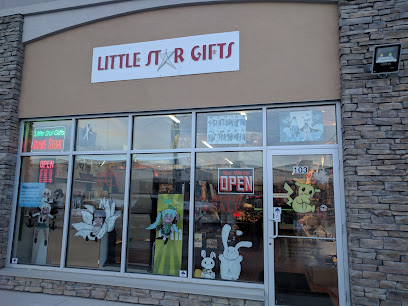
Vantage Vintage Boutique
Explore the charm of vintage fashion at Vantage Vintage Boutique in Winnipeg, where unique styles come alive in a welcoming atmosphere.
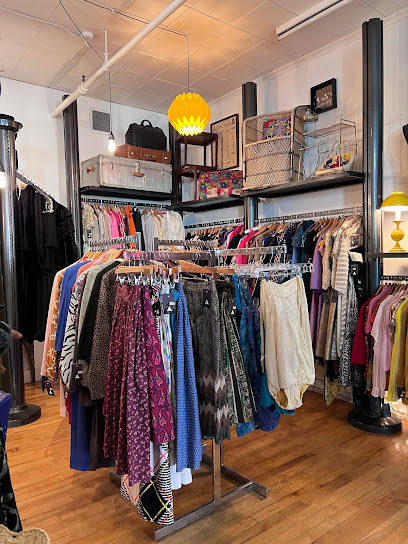
Johnston Terminal Antique Mall
Explore unique antiques and vintage treasures at Johnston Terminal Antique Mall, a historic shopping destination in Winnipeg's vibrant Forks area.
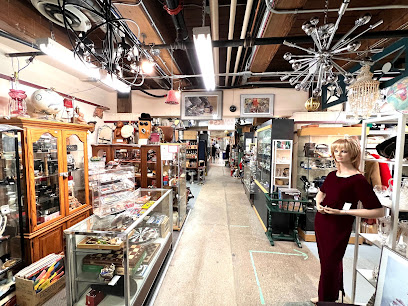
Riley Grae
Explore Riley Grae in Winnipeg for unique gifts and a cozy coffee experience, blending local charm with eclectic finds.
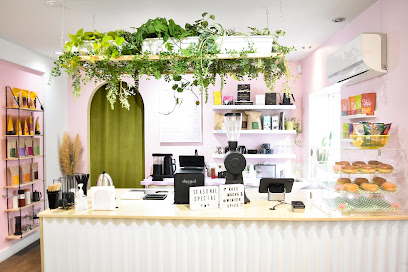
The Locals Outlet Collection
Explore The Locals Outlet Collection in Winnipeg for unique gifts and locally crafted treasures that embody the spirit of Manitoba.
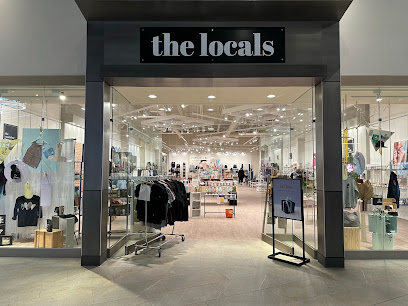
Aunt Monica's Attic
Discover a treasure trove of craft supplies and toys at Aunt Monica's Attic in Winnipeg, where creativity and nostalgia come together for an unforgettable experience.

tara davis studio boutique
Discover unique handcrafted gifts and support local artisans at Tara Davis Studio Boutique in the heart of Winnipeg.
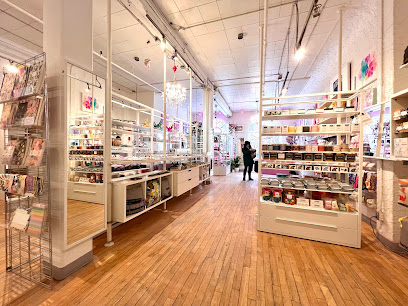
Oriental Gifts
Explore the vibrant world of culture at Oriental Gifts, your go-to destination for unique souvenirs and handcrafted treasures in Winnipeg.
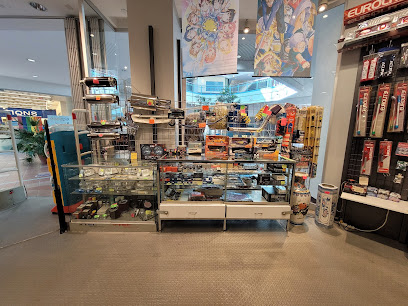
Forks Trading Company
Discover unique gifts and local crafts at Forks Trading Company in Winnipeg, a charming store filled with delightful treasures that capture the spirit of Manitoba.
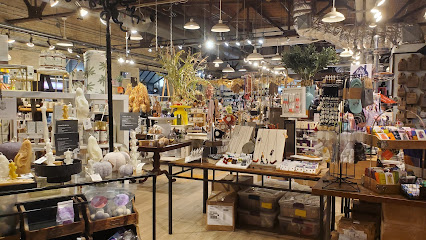
Teekca's Aboriginal Boutique
Explore Teekca's Aboriginal Boutique for authentic Indigenous art and crafts, celebrating the rich heritage of Canada's First Peoples.
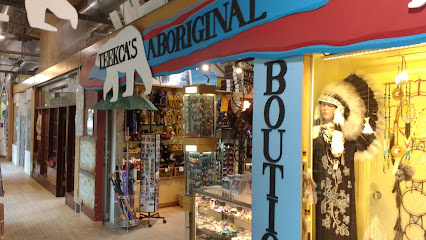
Oh Canada
Explore Oh Canada in Winnipeg for unique gifts and souvenirs that celebrate the beauty and culture of Canada.
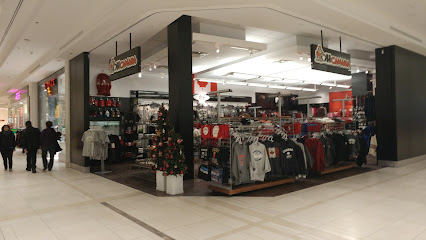
Essential bars & hidden hideouts
King's Head Pub
Experience the vibrant atmosphere and local flavors at King's Head Pub in Winnipeg's Downtown, a must-visit for every traveler.
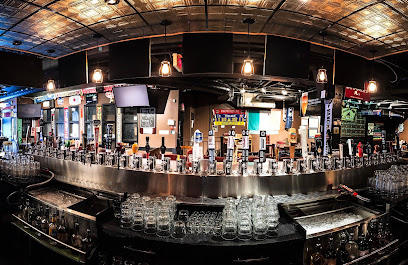
The Grove Pub & Restaurant
Discover The Grove Pub & Restaurant in Winnipeg – where casual dining meets a vibrant atmosphere filled with local flavors and craft beverages.
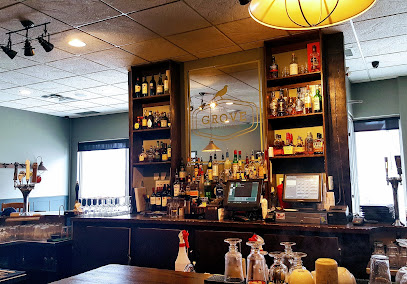
Shannon's Irish Pub and Eatery
Immerse yourself in Irish culture at Shannon's Irish Pub and Eatery, Downtown Winnipeg's vibrant hub for food, drinks, and live entertainment.
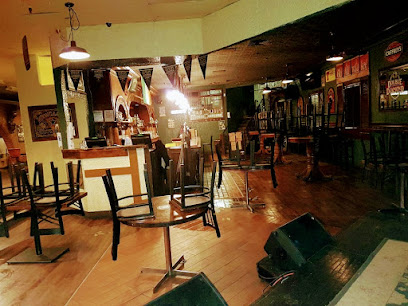
The Toad in the Hole
Experience the charm of The Toad in the Hole, Winnipeg's favorite pub for delicious food, craft drinks, and a warm ambiance perfect for relaxation.
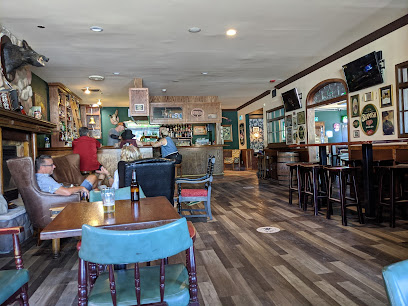
Wee Johnny's Irish Pub
Discover the warmth of Irish hospitality and vibrant comedy at Wee Johnny's Irish Pub in Winnipeg – a must-visit for every tourist!
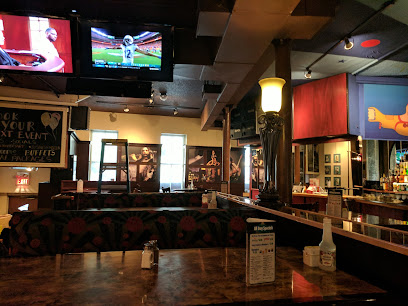
Hermanos Restaurant & Wine Bar
Experience the vibrant flavors of South America at Hermanos Restaurant & Wine Bar in Winnipeg, where every dish tells a story.
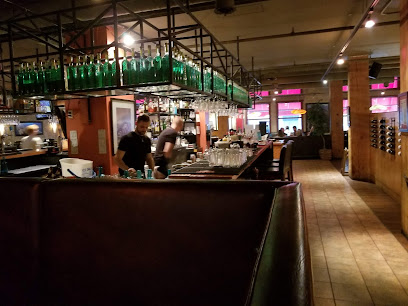
The Good Will Social Club
Explore The Good Will Social Club in Winnipeg: a lively venue where great food meets fantastic live music in a vibrant community setting.
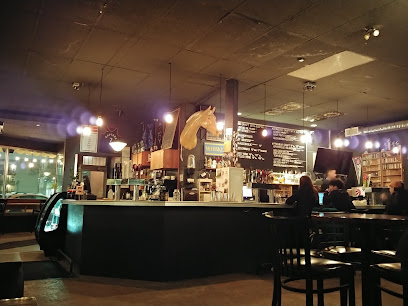
Yellow Dog Tavern
Discover the local charm of Yellow Dog Tavern, a vibrant pub in downtown Winnipeg offering delicious food, craft beers, and a welcoming atmosphere.
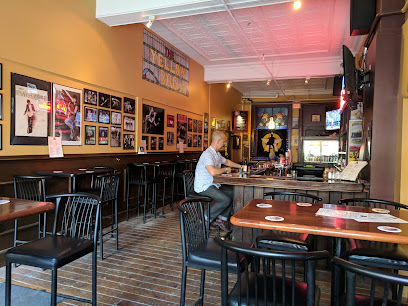
Sous Sol
Discover the culinary delights of Sous Sol, where exquisite dining meets innovative cocktails in Winnipeg's vibrant Osborne neighborhood.
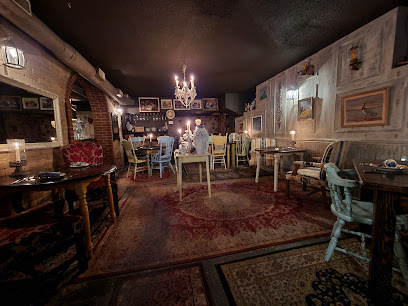
The Riverside: Tap & Table
Discover The Riverside: Tap & Table in Winnipeg - the ultimate sports bar and live music venue featuring karaoke, delicious food, and a vibrant atmosphere.

Thirsty Lion Tavern
Discover the heart of Winnipeg's nightlife at Thirsty Lion Tavern, where great food and drinks meet a lively atmosphere.
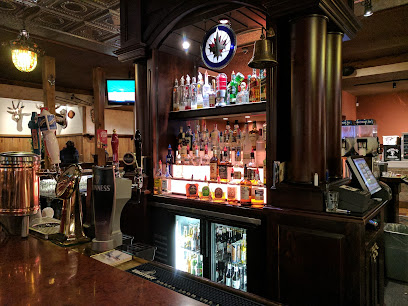
High And Lonesome Club
Experience the vibrant nightlife of Winnipeg at High And Lonesome Club, a top bar and live music venue showcasing the best local talent.
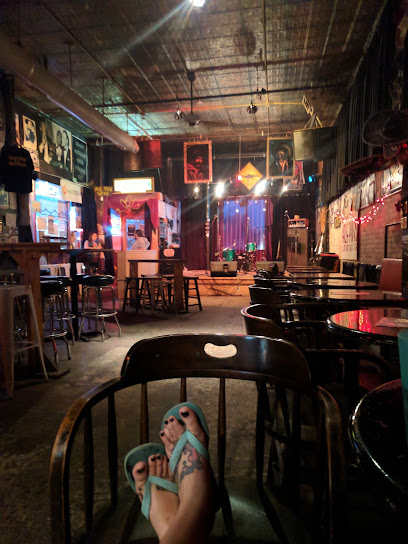
Royal George Hotel
Discover the Royal George Hotel: A vibrant live music venue in Winnipeg offering great food, drinks, and an unforgettable atmosphere.
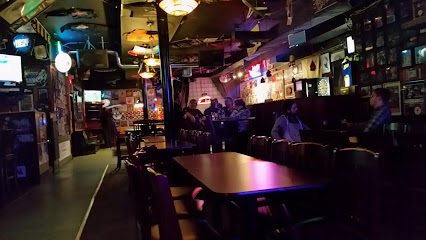
Club 200
Discover Club 200, Winnipeg's premier gay nightclub offering vibrant nightlife, delicious food, and unforgettable entertainment experiences.
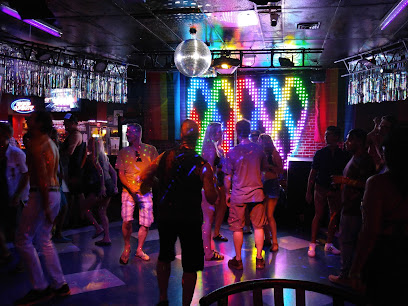
Garrick Hotel Bar
Experience the vibrant atmosphere and rich history of the Garrick Hotel Bar, a must-visit destination for beer lovers and social butterflies in Winnipeg.

Local Phrases
-
- HelloHello
[Həˈloʊ] - GoodbyeGoodbye
[ɡʊdˈbaɪ] - YesYes
[jɛs] - NoNo
[noʊ] - Please/You're welcomePlease/You're welcome
[pliːz/jʊr ˈwɛlkəm] - Thank youThank you
[θæŋk juː] - Excuse me/SorryExcuse me/Sorry
[ɪkˈskjuz mi/ˈsɔri] - How are you?How are you?
[haʊ ɑr juː] - Fine. And you?Fine. And you?
[faɪn ənd juː] - Do you speak English?Do you speak English?
[du juː spiːk ˈɪŋɡlɪʃ] - I don't understandI don't understand
[aɪ doʊnt ˌʌndərˈstænd]
- HelloHello
-
- I'd like to see the menu, pleaseI'd like to see the menu, please
[aɪd laɪk tuː siː ðə ˈmɛnjuː pliːz] - I don't eat meatI don't eat meat
[aɪ doʊnt iːt mit] - Cheers!Cheers!
[ʧɪrz] - I would like to pay, pleaseI would like to pay, please
[aɪ wʊd laɪk tuː peɪ pliːz]
- I'd like to see the menu, pleaseI'd like to see the menu, please
-
- Help!Help!
[hɛlp] - Go away!Go away!
[ɡoʊ əˈweɪ] - Call the Police!Call the Police!
[kɔl ðə pəˈlis] - Call a doctor!Call a doctor!
[kɔl ə ˈdɑktər] - I'm lostI'm lost
[aɪm lɔst] - I'm illI'm ill
[aɪm ɪl]
- Help!Help!
-
- I'd like to buy...I'd like to buy...
[aɪd laɪk tuː baɪ] - I'm just lookingI'm just looking
[aɪm ʤʌst ˈlʊkɪŋ] - How much is it?How much is it?
[haʊ mʌʧ ɪz ɪt] - That's too expensiveThat's too expensive
[ðæts tuː ɪkˈspɛnsɪv] - Can you lower the price?Can you lower the price?
[kæn juː ˈloʊər ðə praɪs]
- I'd like to buy...I'd like to buy...
-
- What time is it?What time is it?
[wʌt taɪm ɪz ɪt] - It's one o'clockIt's one o'clock
[ɪts wʌn əˈklɑk] - Half past (10)Half past (10)
[hɑf pæst (10)] - MorningMorning
[ˈmɔrnɪŋ] - AfternoonAfternoon
[ˌæftərˈnun] - EveningEvening
[ˈiːvnɪŋ] - YesterdayYesterday
[ˈjɛstərˌdeɪ] - TodayToday
[təˈdeɪ] - TomorrowTomorrow
[təˈmɔroʊ] - 11
[wʌn] - 22
[tuː] - 33
[θriː] - 44
[fɔr] - 55
[faɪv] - 66
[sɪks] - 77
[sɛvən] - 88
[eɪt] - 99
[naɪn] - 1010
[tɛn]
- What time is it?What time is it?
-
- Where's a/the...?Where's a/the...?
[wɛrz ə/ði] - What's the address?What's the address?
[wɑts ðə əˈdrɛs] - Can you show me (on the map)?Can you show me (on the map)?
[kæn juː ʃoʊ miː (ɒn ðə mæp)] - When's the next (bus)?When's the next (bus)?
[wɛnz ðə nɛkst (bʌs)] - A ticket (to ....)A ticket (to ....)
[ə ˈtɪkɪt (tu ....)]
- Where's a/the...?Where's a/the...?
History of Winnipeg
-
Long before European settlers arrived, Winnipeg was a significant meeting place for Indigenous peoples, particularly the Anishinaabe, Cree, Oji-Cree, Dakota, and Dene nations. The confluence of the Red and Assiniboine Rivers, known as The Forks, has been a gathering site for over 6,000 years. Archaeological evidence suggests that it was an important trading center, with networks extending across North America.
-
In the late 17th century, Winnipeg became a focal point for the fur trade, primarily driven by the Hudson's Bay Company and the North West Company. Fort Garry, established in 1821 by the Hudson's Bay Company, served as a major trading post and was pivotal in the development of the region. The fur trade attracted European settlers and Métis communities, who played an essential role in the area's cultural and economic development.
-
The Red River Rebellion of 1869-1870 was a significant event in Winnipeg's history. Led by Louis Riel and the Métis, the rebellion was a response to the transfer of the Hudson's Bay Company's territories to Canada without consulting the local population. The conflict resulted in the creation of the province of Manitoba in 1870, with Winnipeg as its capital, and laid the groundwork for the recognition of Métis rights.
-
The completion of the Canadian Pacific Railway in 1881 was a transformative event for Winnipeg. The railway connected the city to the rest of Canada and spurred rapid growth and development. Winnipeg became a major transportation and trade hub, attracting a wave of immigrants and leading to a population boom. By the early 20th century, it was one of the fastest-growing cities in North America.
-
The Winnipeg General Strike of 1919 was one of the most significant labor actions in Canadian history. Over 30,000 workers walked off their jobs, demanding better wages and working conditions. The strike lasted six weeks and ended in violent confrontations, but it had lasting effects on labor relations in Canada. The event highlighted the struggles of the working class and led to changes in labor laws and policies.
-
Winnipeg has long been a cultural mosaic, shaped by waves of immigrants from around the world. The city boasts vibrant neighborhoods such as the historic Exchange District, known for its arts and culture scene, and the North End, home to diverse communities including Ukrainian, Jewish, and Filipino populations. Festivals like Folklorama celebrate this cultural diversity, making Winnipeg a rich tapestry of global traditions.
-
The Forks, a historic site at the confluence of the Red and Assiniboine Rivers, has undergone significant redevelopment since the late 20th century. Once a bustling fur trade hub, it has been transformed into a vibrant public space featuring markets, museums, and parks. The Forks National Historic Site and the Canadian Museum for Human Rights are key attractions, drawing visitors from around the world and highlighting Winnipeg's historical and cultural significance.
-
In recent decades, Winnipeg has experienced economic diversification and growth. Industries such as aerospace, technology, and manufacturing have flourished, contributing to the city's economic resilience. The downtown area has seen revitalization efforts, including the development of the SHED (Sports, Hospitality, and Entertainment District) and the expansion of the Winnipeg Convention Centre. These developments have positioned Winnipeg as a dynamic and forward-looking city.
Winnipeg Essentials
-
Winnipeg is accessible by air, with the Winnipeg James Armstrong Richardson International Airport (YWG) serving as the primary gateway. The airport is well-connected with direct flights from major cities in Canada and the United States. For those driving, Winnipeg is accessible via the Trans-Canada Highway. The VIA Rail Canada also offers train services to Winnipeg from various cities across the country.
-
Winnipeg has a reliable public transportation system managed by Winnipeg Transit, which includes buses that cover most parts of the city. Taxis and ride-sharing services like Uber are also widely available. If you prefer to drive, rental car services are accessible at the airport and throughout the city. For a more eco-friendly option, Winnipeg has several bike lanes and bike-sharing programs.
-
The official currency in Winnipeg is the Canadian Dollar (CAD). Credit and debit cards are widely accepted in most establishments, including hotels, restaurants, and shops. ATMs are readily available for cash withdrawals. It is advisable to carry some cash for small purchases or in case you find yourself in an area where card payments are not accepted.
-
Winnipeg is generally safe for tourists, but like any city, it has areas with higher crime rates. It is advisable to avoid walking alone at night in neighborhoods like the North End and certain parts of downtown. Always stay aware of your surroundings, keep your belongings secure, and avoid displaying valuables openly. Stick to well-lit, busy areas, especially after dark.
-
In case of an emergency, dial 911 for immediate assistance from police, fire, or medical services. Winnipeg has several hospitals and clinics, including the Health Sciences Centre and St. Boniface Hospital. It is recommended to have travel insurance that covers medical emergencies. For minor issues, pharmacies are widely available for over-the-counter medications.
-
Fashion: Do dress in layers, as Winnipeg's weather can be unpredictable. In winter, wear warm clothing, including a coat, gloves, and a hat. Avoid overly casual attire in fine dining restaurants. Religion: Do respect religious customs and dress modestly when visiting places of worship. Public Transport: Do offer your seat to elderly passengers and people with disabilities. Don't eat or drink on public transport. Greetings: Do greet people with a smile and a handshake. Avoid overly familiar gestures unless you know the person well. Eating & Drinking: Do try the local cuisine, including specialties like poutine and Winnipeg-style rye bread. Don't leave a small tip; 15-20% is standard in restaurants.
-
To experience Winnipeg like a local, visit the Forks Market, a historic site with shops, restaurants, and cultural activities. Attend a Winnipeg Jets hockey game if you're visiting during the NHL season. Explore the Osborne Village and Exchange District for unique shops, cafes, and nightlife. Don't miss the Assiniboine Park and Zoo, especially during the summer months when the outdoor attractions are in full swing.
Trending Landmark in Winnipeg
-
The Forks Market
-
Assiniboine Park
-
Canadian Museum for Human Rights
-
Kildonan Park
-
Manitoba Museum
-
The Fort Garry Hotel, Spa and Conference Centre
-
Leo Mol Sculpture Garden
-
Royal Canadian Mint
-
The Leaf
-
Killer Noob Escapes
-
Royal Aviation Museum of Western Canada
-
Fort Gibraltar
-
Bois-des-Esprits
-
Saint Boniface Cathedral
-
Trappist Monastery Provincial Heritage Park
Nearby Cities to Winnipeg
-
Things To Do in Cavalier
-
Things To Do in Grand Forks
-
Things To Do in Devils Lake
-
Things To Do in Valley City
-
Things To Do in Fargo
-
Things To Do in Jamestown
-
Things To Do in Minot
-
Things To Do in Wahpeton
-
Things To Do in Bismarck
-
Things To Do in Mandan
-
Things To Do in Ely
-
Things To Do in Duluth
-
Things To Do in Williston
-
Things To Do in Saint Cloud
-
Things To Do in Dickinson

















